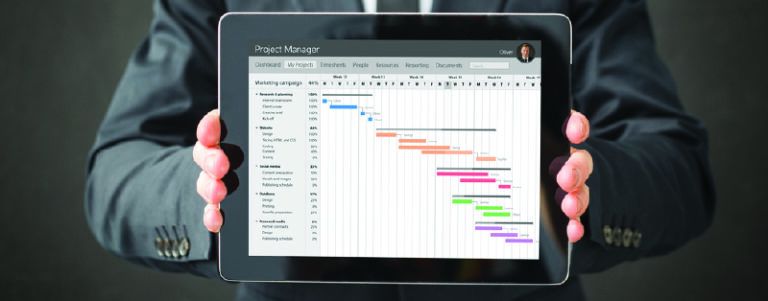What is a Project Report and How to Create one?

In the dynamic landscape of business and organizations, projects serve as the heartbeat of progress. Whether it’s launching a new product, implementing a system upgrade, or executing a marketing campaign, projects are the engines that drive innovation, growth, and change. However, behind every successful project lies meticulous planning, diligent execution, and effective management. This is where the project report emerges as a vital tool, serving as a roadmap that guides stakeholders through the intricacies of project development and implementation.
What is a Project Report?
A project report is a document that consists of crucial information about a project. It includes information that can be used to evaluate the progress of a project, understand its objective, trace its journey, provide direction to team members, mitigate risks, and communicate a project’s success or failure to stakeholders and other business entities.
Main Components of a Project Report
- General information
- Executive summary
- Organisational summary
- Project description
- Marketing plan
- Capital structure and operating cost
- Management plan
- Financial aspects
- Technical aspects like technologies used, manufacturing process, and machinery capabilities
- Project implementation
Best Project Management Courses
Why is it Important?
- It helps track a project’s progress, resource requirements, workforce delegation, etc.
- It defines a project’s objectives, performance metrics, and expectations.
Two Popular Types of Project Reports
Project status and completion reports are the two project reports popularly used across industries. While a project status report holds importance throughout the project and documents the overall progress of a project, a project completion report comes at the end of the project of project learning and details of things that worked well and did not work.
Who Prepares a Project Report?
A project manager prepares a project report. They collaborate with departmental heads to prepare a well-rounded and effective project report.
How to Prepare a Project Report?
Here is a step-by-step guide on how to create a project report.
Step 1:
Identify your objective
Identifying your objective at the beginning helps keep your project on track and provides metrics to measure success and progress. Sit down and list out reasons for preparing a project report. In simpler words, find an answer to “Why should I prepare a project report?” It will help in understanding the objective behind developing a report.
Step 2:
Understand the audience
Understanding your target audience’s likes, dislikes, and preferences helps prepare a project report that your audience can easily understand.
Step 3:
Choose the suitable template
Whether choosing from the existing template or creating a new project report temple, select a template that conveys your message effectively and convincingly.
Remember that your template must answer these questions:
- Who is my audience?
- What is the purpose behind making the report?
- What are the budgets, time, and deliverables of the project?
Step 4 :
Data Collection
The chances of you having a solid project report increase when you have data to back your claims. Therefore, including data from case studies, surveys, and interviews helps support your claims and develop a successful project report.
Step 5 :
Project structure
Every report has a structure that arranges and organises all data and information in a user-friendly manner. Here’s a close look at the project report’s structure:
- Summary: It is written once the report is completed. It helps in presenting the main objective of the information. This critical section of the document compels the reader to proceed with the report.
- Introduction: It introduces the report’s contents to the readers. The scope, essential parameters, objectives, targets, and deadlines are mentioned in this part of the project report.
- Body: It presents the background details, data, analysis, discussion, recommendation, etc.
- Conclusion: In this part of the project report, project managers present a clear and concise end to the document.
Pro-tip: Spending some time on the final project report before forwarding it to key stakeholders will help fix typos, grammatical errors, structural challenges, and others.
If you are an aspiring project manager wanting to upskill or brush up on your project management skills, Emeritus India’s certificate courses in project management can help you. You can also explore the Executive Programme in Project Management by IIML (Lucknow) for a comprehensive foundation in the subject.
Emeritus India’s training programmes are offered in association with reputed institutes like IIM, IIT, and ISB and are designed for fresh graduates and experienced professionals. Joining our programmes will equip you with robust planning abilities, the capacity to set clear goals and achieve realistic objectives.









